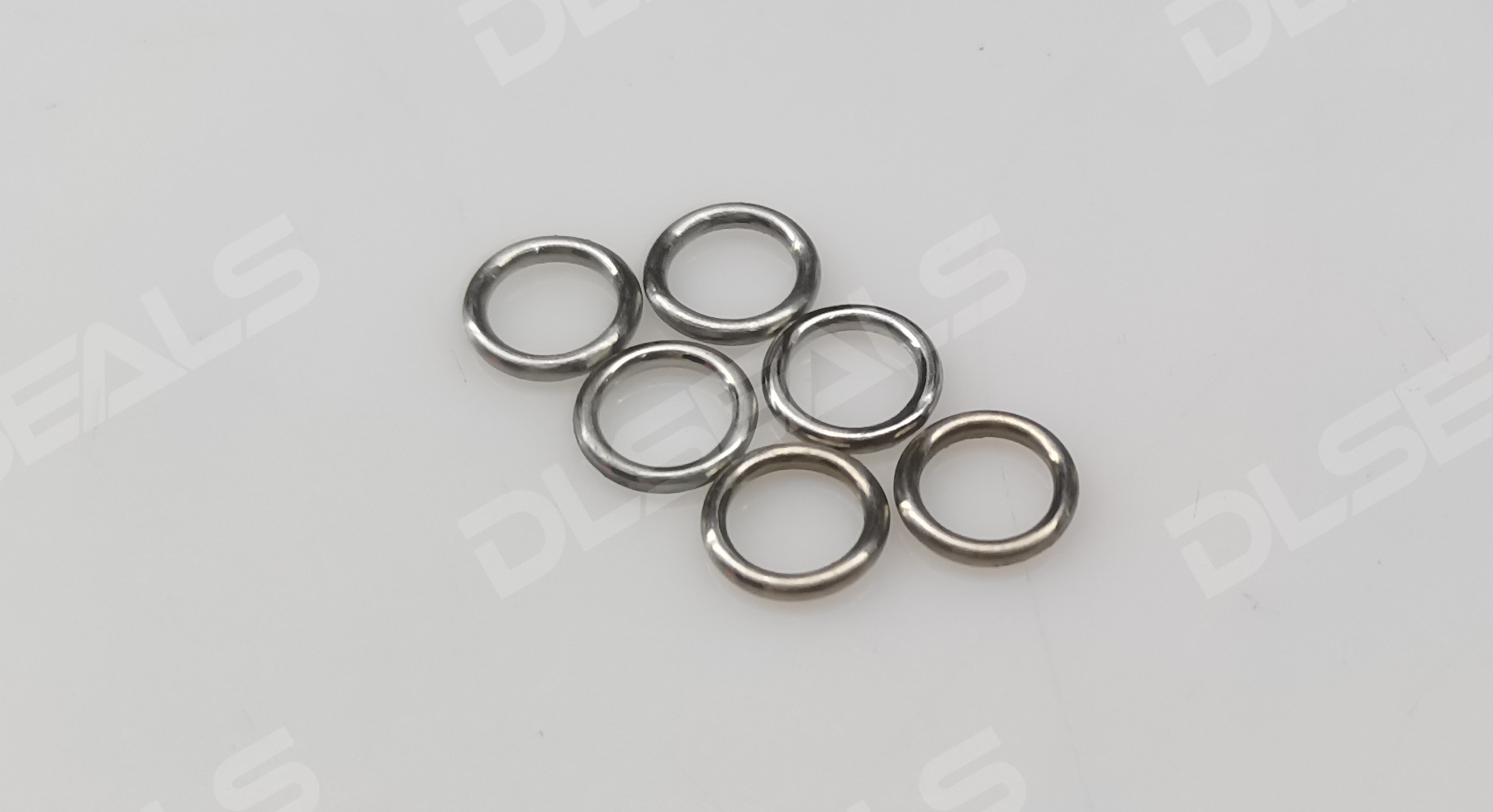Diaphragm compressors are widely used in gas compression, chemical production and special gas processing due to their advantages of no leakage, high compression ratio and cleanliness. The metal seal ring in its core structure is a key component to ensure efficient sealing between the cylinder and the diaphragm, which is directly related to the operating efficiency, life and safety of the equipment. This article analyzes the core requirements of the diaphragm compressor cylinder for metal seal rings from a technical perspective.
1. High sealing performance
Under high pressure (up to 30 MPa or more) and frequent reciprocating motion conditions, the metal seal ring needs to achieve zero leakage static and dynamic sealing.
Static sealing: When the compressor is stopped or in stable operation, the seal ring needs to fit tightly with the cylinder and diaphragm surface to prevent gas micro-leakage.
Dynamic sealing: In the high-frequency vibration of the diaphragm (usually 200-1000 times/minute), the seal ring needs to maintain uniform pressure on the contact surface to avoid sealing failure due to vibration.
Technical key: The sealing ring needs to compensate for micro deformation through corrugation or elastic structure design, and the surface roughness needs to be controlled within Ra≤0.8μm.
2. Pressure resistance and temperature resistance under extreme working conditions
Diaphragm compressors often face high temperature (-50℃ to 300℃) and high pressure combined working conditions, which puts strict requirements on the material and structure of metal sealing rings.
Pressure resistance: Under high pressure impact, the sealing ring needs to have high yield strength (usually ≥800 MPa) to avoid plastic deformation and seal failure.
Temperature resistance: It needs to withstand hot and cold cycle shock, and the material’s oxidation resistance (such as the stability of the oxide layer of nickel-based alloys) and low-temperature brittleness (such as the low-temperature toughness of titanium alloys) at high temperature must meet the requirements.
Solution: Use multi-layer composite structure (such as metal + elastomer) or gradient material design to balance pressure bearing and temperature adaptability.
3. Corrosion resistance and chemical stability
In chemical or special gas (such as chlorine, hydrogen, acidic medium) scenarios, the sealing ring needs to resist erosion by corrosive media.
Material selection: Hastelloy C276, Monel or surface coating (such as PTFE composite coating) are preferred.
Long-term stability: Corrosion resistance needs to be verified through salt spray test (ASTM B117) and acid gas immersion test (such as H2S environment simulation).
4. Dynamic balance of elasticity and rigidity
The sealing ring needs to achieve reliable sealing within the elastic deformation range and have sufficient rigidity to resist high-pressure extrusion.
Elastic modulus control: Adjust the elastic modulus (typical value: 100-200 GPa) by optimizing the material ratio (such as adding beryllium and molybdenum elements) or structural design (such as V-shaped corrugation).
Fatigue life: It needs to meet the fatigue strength requirements under 10^7 cyclic loads to avoid cracks caused by repeated deformation.
5. Precision machining and adaptability
The metal sealing ring needs to achieve high-precision matching with the cylinder and diaphragm, and tolerance control directly affects the sealing effect.
Dimensional accuracy: The diameter tolerance must be controlled within ±0.02 mm, and the form and position tolerance (such as roundness and flatness) must be ≤0.01 mm.
Surface treatment: Use polishing or chemical plating to reduce the friction coefficient (≤0.1) and reduce wear.
VI. Long life and reliability
Failure of the seal ring is one of the main failure modes of the diaphragm compressor, and its life must match the equipment overhaul cycle (usually ≥8000 hours).
Wear resistance: The surface hardness must reach HRC 40-50, which can be improved by nitriding or tungsten carbide coating.
Maintainability: Design a modular structure to support rapid replacement and reduce downtime costs.
Conclusion
The performance of the metal seal ring directly determines the sealing efficiency and operational reliability of the diaphragm compressor. In the future, with the development of new materials (such as metallic glass, additive manufacturing alloys) and intelligent monitoring technologies (such as embedded stress sensors), the seal ring will evolve towards higher working condition adaptability, longer life and intelligence. For designers, comprehensive optimization is required from multiple dimensions including materials, structures and processes to meet the increasingly stringent industrial demands of diaphragm compressors.
Post time: Feb-26-2025

